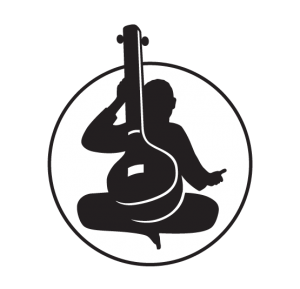
Two Torchbearers of Raag Sangeet
By MOHAMED KHAKI
Raag-Mala Toronto’s 2024 season opener, in partnership with Aga Khan Museum, is labelled “Paramparik” by the concert tour organizer, tabla maestro Pandit Subhen Chatterjee.
Paramparik refers to familial tradition or heritage and is widely used in the context of Indian classical music. If raag sangeet is by its nature an oral tradition, one based on a shishya (student) learning directly from their guru (teacher), then aren’t all performances of this genre “paramparik”? Why the necessity of this label?
It occurs to me that Subhen used this moniker to emphasize the extent and depth of this tradition with respect to the two principal artistes with whom he will be performing on March 16.

Ustad Hidayat Hussein Khan hails from the Imdadkhani-Etawa gharana, the tradition whose most famous exponent was the Aftab-e-Sitar (Sun of the Sitar) Ustad Vilayat Khan, whose name is indelibly linked to playing in the gayaki ang, the vocal style of playing on the sitar. Hidayat is the seventh direct descendent in a generation of influential sitar players that includes his great grandfather Ustad Imdad Khan, after whom the gharana is named.
Anyone who is a gharanadar, i.e. someone who is born in a gharana family, as was Hidayat, is surrounded by music from birth. As another such musician said to me, “Music was my mother tongue”.
In answer to my questions, Hidayat mentioned that he sat on the stage with his father (as a non-performer) when he was four or five years old. I am sure that the legendary Khansaheb had recognized a spark in his son and wanted him to be comfortable in front of an audience from an early age. Hidayat modestly added that many musical families have the same practice.
Hidayat was eight years old when he accompanied his father on stage as a performer and nine when he gave his first solo recital. His tabla accompanist then was the brilliant maestro Pandit Samta Prasad. Knowing how reluctant many musicians are to allow their students to give public recitals, Khansaheb must have had tremendous confidence in Hidayat to let him play on stage at such an early age – and with one of the foremost tabla nawaz of the time.
The vocalist Arshad Ali Khan likewise is directly descended from Ustad Abdul Wahid Khan and Ustad Abdul Karim Khan, the cousins (or cousin brothers as we would say in the British colonies!) regarded as the founders of the Kirana gharana. Arshad took taalim from his maternal uncles Ustad Mashkoor Ali Khan and Mubarak Ali Khan, and spent much of his youth at ITC Sangeet Research Academy, then a premier centre of learning raag sangeet.

At the age of nine, Arshad was invited by the legendary Pandit Bhimsen Joshi to perform at the Sawai Gandharva Samellan in Pune, where he was the toast of the festival. There is a short clip of this performance on YouTube, where he shows remarkable confidence in singing raag Puriya Kalyan, not one of the easiest raags in the canon.
What is striking on the clip is the priceless reaction of his accompanist harmonium – one can see on Pandit Tulsidas Borkar’s face a mixture of bemusement and respect at young Arshad’s singing. Not a meagre reaction from a senior harmonium player who regularly accompanied Bharat Ratna Pandit Bhimsen Joshi.
Arshad has since received many awards including the prestigious Bismillah Khan Yuva Puraskar bestowed by Sangeet Natak Akademi in 1983.
Undaunted by early fame, both Hidayat and Arshad have carved out their own niches in the world of music. In addition to raag sangeet, both have made forays into nontraditional forms.
Hidayat has lent his versatility to several film scores and performed in numerous fusion concerts, independently and in collaboration with illustrious musical names such as Ndugu Chancler, Ronnie Woods, Alicia Keys, Usher, Zakir Hussain, Pete Townshend, Will.I.Am, Jay Z, and Darryl Jones.
I admire how Arshad is drawing younger audiences into raag sangeet by performances with musicians from other genres. A terrific example is where he sings a short intro to a raag that is woven into a Bollywood song, in a collaboration with the duo Surendro and Soumyojit and their band. That piece is available on YouTube.
Pandit Subhen Chatterjee, the celebrated tabla nawaz, will accompany Hidayat Khan on sitar, and Arshad Ali Khan in the second half. He is well-known to Toronto audiences – last year he was part of the Divine Trio performance at the Aga Khan Museum, where he also performed with Pandit Vishwa Mohan Bhatt. Subhen has accompanied other senior musicians like Pandit Bhimsen Joshi, Vidushi Girija Devi and Ustad Shahid Parvez.
Subhen is also a very fine soloist and founded the fusion music group Karma. His albums Bandish Fusion: Redefined and Bandish Fusion: the Lasting Legacy were extremely well received; the latter was nominated for a JPF Music Award.

Jonathan Kay will accompany Arshad on the esraj, making it one of a handful of times that Raag-Mala audiences have heard the esraj as an accompanying instrument.
Born and raised in Toronto, Jonathan is a trained jazz saxophonist. However, he lived in Kolkata and Shantiniketan for 10 years to learn raag sangeet in the guru-shishya tradition with Pandit Shantanu Bhattacharyya, and later with esraj player Sri Abir Singh Khangura. With his experiences in the jazz and raga music traditions, Jonathan is cultivating a transcultural approach to experimental improvisation with his bands Monsoon, Kayos Theory and The Coltrane Sutras.
• Mohamed Khaki is on the Raag-Mala team.
When & where: Nanji Family Foundation Auditorium, Aga Khan Museum, 77 Wynford Drive, Toronto. Details and tickets at www.agakhanmuseum.org.
 Previous Post
Previous Post





